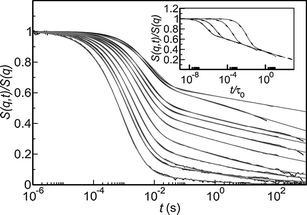It doesn't make sense to talk about phonons for sound propagating through an ideal gas.
You might think that the normal modes should have their energy quantised in the usual way. After all, they exhibit sinusoidal oscillations, so we might expect that there is some way of parameterizing the degrees of freedom in the gas that reveal it to contain a set of harmonic oscillators (alongside more complex microscopic dynamics). These harmonic oscillators would have discrete energy levels in a quantum description, which we could describe using the language of phonons.
This argument seems convincing, but in fact, the normal mode oscillations for sound in an ideal gas are not perfectly sinusoidal. There will also be thermal fluctuations on top. And these thermal fluctuations make it impossible to specify the energy of a sound wave precisely enough for the usual quantisation procedure to be relevant.
If we take a region within an ideal gas that contains N particles, on average, then the root mean square deviation in particle number is $\sqrt{N}$. This means if we calculate the density as a function of position by averaging over small volumes of order $V_d$, the thermal fluctuations in the density, $\rho$, will be of order
$\sqrt{m \rho / V_d}$
where $m$ is the mass of a single gas particle.
To describe a sound wave of wavelength $\lambda$, we need $V_d << \lambda^3$. So the thermal fluctuations in the amplitude of a sound wave of this wavelength must be much larger than
$\sqrt{m \rho / \lambda^3}$.
On the other hand, consider an approximately planar sound wave in a large box of volume $V$. It's energy is
$\frac{1}{2} V \rho^{-1} c_{s}^{2} a^2$
where $c_s$ is the speed of sound, and $a$ is the amplitude of the sound wave (in terms of density).
For the energy to be quantised in jumps of $\hbar \omega$, a single phonon would correspond to density fluctuations of order
$\sqrt{\hbar \omega \rho / V c_{s}^2}$
To describe an approximately planar sound wave of wavelength $\lambda$, we need a box much bigger than $\lambda^3$. So the amplitude fluctuations in a single phonon must be much less than
$\sqrt{\hbar \rho / \lambda^4 c_s}$
For phonons to make sense, we need the density fluctuations from one phonon to be much larger than the thermal fluctuations. So, using the above results, we would need:
$\sqrt{m \rho / \lambda^3} << \sqrt{\hbar \rho / \lambda^4 c_s}$
where the speed of sound in a monatomic ideal gas is $\frac{5}{3} \frac{k T}{m}$.
This simplifies to
$\lambda << \frac{\hbar}{\sqrt{k T m}}$
In physical terms: to get phonons, we need to consider sound waves with a wavelength much less than the wavelength of a single gas particle.
In air at room temperature and pressure, this would be much less than the typical inter atomic distance, so it's impossible to get sound waves with wavelengths this short. This means that there are no phonons for sound waves travelling through air.
What if we try to bring the gas particles closer together, or reduce the temperature, so that their wave functions overlap? We can do this, but then we will get a phase transition, and we won't have an ideal gas any more. In a realistic gas, it would condense to a liquid or solid. But even in an idealized gas with no inter-atomic interactions outside of collisions, we still get a phase transition once the wave functions of the gas particles overlap: Bose Einstein condensation.
The upshot is: there is no way to observe phonons in an ideal gas. Sound in an ideal gas is a purely classical phenomenon.

